There can be your advertisement
300x150
How Humanity Conquered Darkness: From Campfire to Smart Light Bulb
From ember to LED — a journey spanning thousands of years
Click the switch and the room is flooded with light. So familiar we forget: 150 years ago, as darkness fell, life would come to a halt. People went to bed with the sunset and woke up at dawn. How did humanity conquer darkness, and what changed in our lives because of this victory?
Key points from the article:
- Before the 19th century, artificial lighting was a luxury — candles cost as much as meat;
- Kerosene lamps became the first mass-produced light source, but they were extremely fire hazardous;
- Electric lighting appeared in 1879 and changed the rhythm of human life within 50 years;
- Gas lighting was a transitional stage between candles and electricity;
- Modern LED bulbs consume 10 times less energy than incandescent bulbs.
When Night Was Truly Dark
Imagine: twilight is falling outside, and you have no switch or even matches. Making fire was an art, keeping it alive a necessity. This is how our ancestors lived for thousands of years.
The earliest artificial light source was a campfire. But fires couldn't be lit indoors, so people used torches — thin shavings of resinous wood. Birch torches burned brightly but quickly — one evening might burn an entire bundle. Pine torches produced more smoke, but lasted longer.
These torches were placed in special holders — metal stands with clamps. A bucket of water was always placed under the holder for fire safety. Falling embers hissed in water, and smoke went up through the ceiling, coating the beams with black soot.
In wealthy homes, oil lamps were used — clay dishes with wicks. Oil was a luxury: olive, flaxseed, or even whale oil. The lamp gave dim flickering light but could burn for hours.
Interesting fact: the phrase 'work from dawn to dusk' came into use precisely then. Artificial lighting was so expensive that people literally lived by the sun. Life stopped at sunset, and began again at dawn.
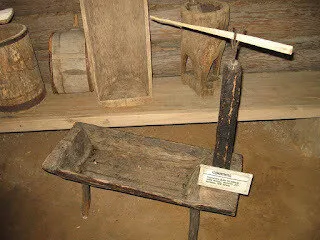 Photo from: kleschyova.blogspot.com
Photo from: kleschyova.blogspot.comThe Candle Era: When Light Cost as Much as Meat
Candles were invented in Ancient Rome, but became widespread only during the Middle Ages. They were made from wax or tallow — and both were expensive. Wax candles burned bright and nearly odorless, but cost a fortune. Tallow was cheaper but smoked and smelled.
In the 14th century, a pound of wax candles in England cost as much as a pound of meat. Imagine: one evening's lighting would cost the price of a family dinner. No wonder candles were only lit for special occasions.
Most people used homemade tallow candles. These were made from beef or sheep fat, dipping the wick into melted grease. The process was labor-intensive — one candle required 15 to 20 dips.
In the 18th century, spermaceti candles — a wax-like substance from sperm whale heads — appeared. They burned brighter and longer than wax, but were even more expensive. Whaling became profitable largely due to demand for spermaceti candles.
Interesting detail: candle quality reflected social status. The wealthy could afford bright wax candles in candelabras. Middle-class people used tallow. Poor families economized on every drop of wax and extinguished candles at the first sign.
The Kerosene Revolution: Light for All
In 1853, Polish chemist Ignacy Łukasiewicz invented the kerosene lamp. This was a true revolution in lighting. Kerosene burned brighter than candles, didn't smoke, and was relatively cheap.
Kerosene lamps quickly captured the world. By 1860, they were in every home — from peasant huts to city apartments. Finally, a bright light source became affordable!
The kerosene lamp's design was ingeniously simple: a reservoir for kerosene, a wick, and a glass chimney to protect the flame. The chimney not only shielded from wind but also created draft, making kerosene burn brighter.
Various types of lamps appeared: table, wall-mounted, ceiling. Wealthy homes adorned with elegant lamps with colored shades. In student rooms stood simple 'seven-line' lamps — wicks seven lines wide.
But kerosene lighting had serious drawbacks. Lamps often exploded, causing fires. Kerosene needed regular refilling, wicks trimming, and chimneys cleaning. And the smell... The distinctive kerosene odor permeated everything.
Interesting fact: it was the kerosene lamps that gave rise to the expression 'burning the midnight oil'. Finally, one could work or read late into the night without financial ruin.
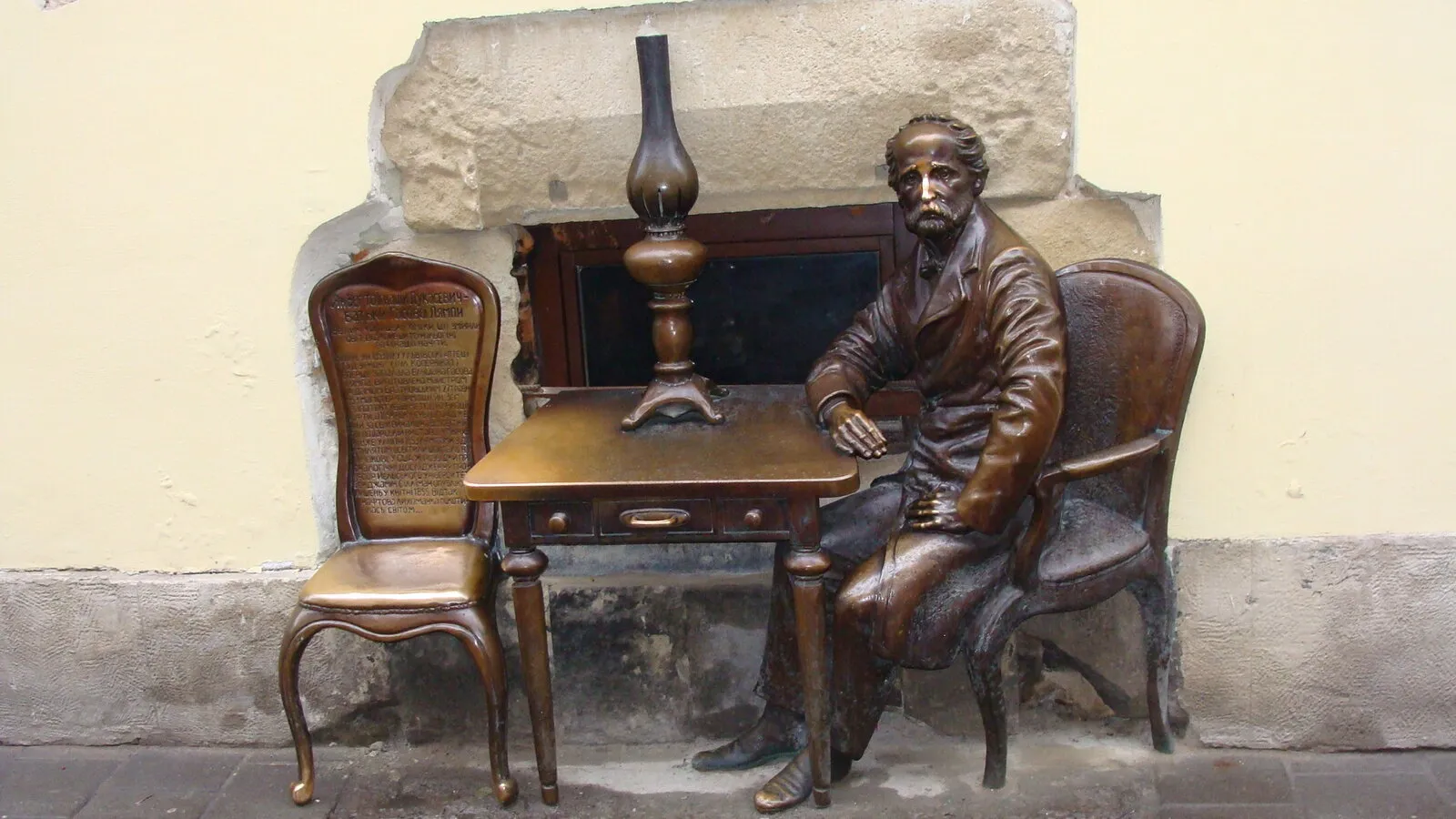 Photo from: tiv1.am
Photo from: tiv1.amGas Lamps: Urban Light
Parallel to kerosene, gas lighting was developing. In 1792, Scottish man William Murdoch lit his home in Cornwall with gas. London became the first city to have street gas lighting in 1813.
Gas was produced from coal at special factories and then delivered to lamps through pipes. Gas lamps burned brighter than kerosene and required less maintenance. Of course, they needed to be lit each evening and extinguished in the morning.
The job of a lamp lighter became one of the most romantic professions in the city. As the sun set, lighters walked the streets with long poles, igniting gas lamps. In foggy London, they were true heroes — without them, the city plunged into total darkness.
In wealthy homes, gas was piped directly into rooms. Gas jets gave good light but were dangerous — a gas leak could cause an explosion or poisoning. Also, gas stoves consumed oxygen and released carbon dioxide.
In Russia, gas lighting appeared in 1835 in St. Petersburg. By 1876, gas lamps lit central streets of Moscow and St. Petersburg. But electric lighting was still far away.
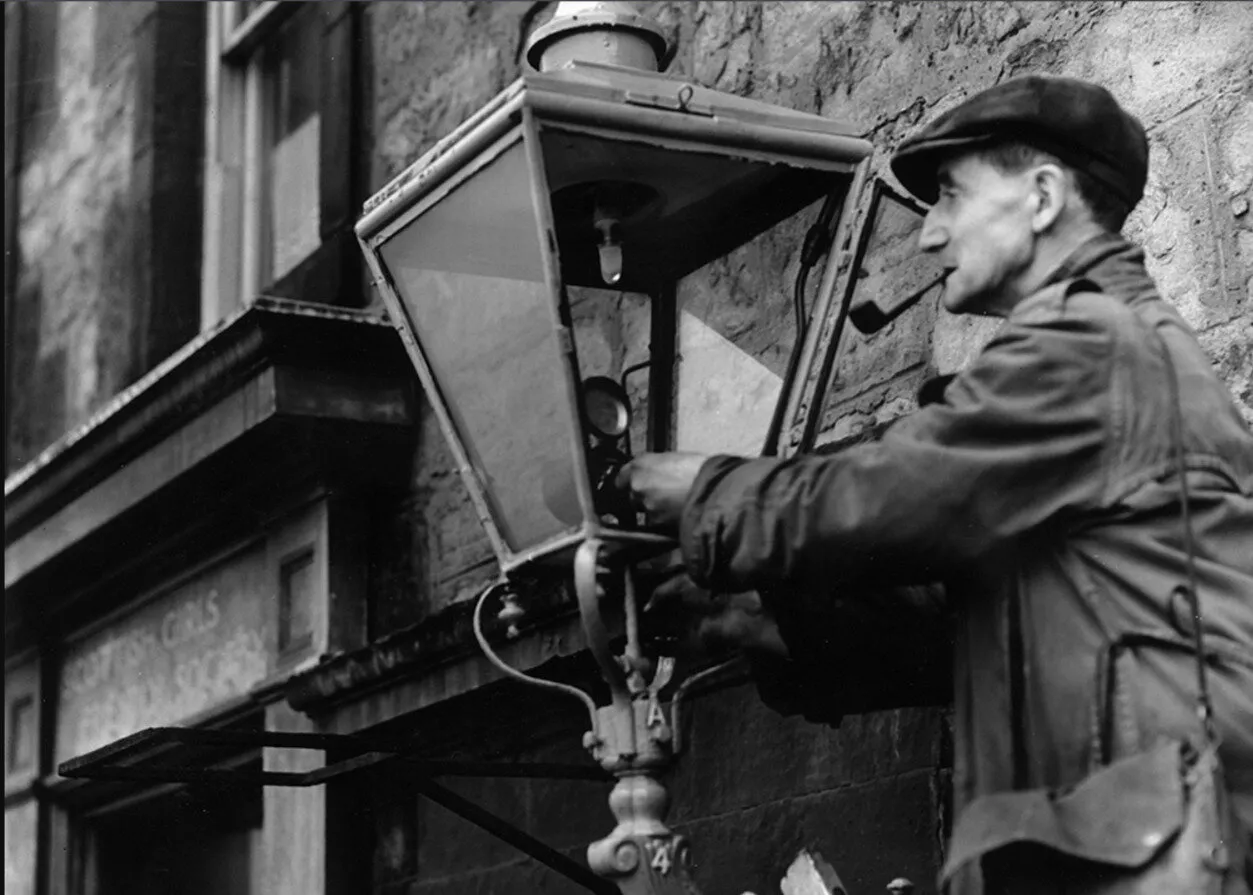 Photo from: tvc.ru
Photo from: tvc.ruThe Electric Wonder: Birth of a New Era
On October 21, 1879, American inventor Thomas Edison successfully tested the incandescent bulb that burned for 13.5 hours. This was a turning point in lighting history.
The first incandescent lamps were imperfect: they lasted only 40–50 hours, gave a yellowish light, and were very expensive. But within ten years, the situation changed dramatically. Lamps lasted hundreds of hours, and power plants appeared in major cities.
In 1882, Edison built the first power plant in the world in New York. It served only one block, but it marked the beginning of the electrical age. The wealthy rushed to order electric lighting — not only convenient but also prestigious.
Electricity outperformed gas and kerosene in every aspect: safety, convenience, cleanliness. No need to refill fuel, clean chimneys, or fear explosions. Click a switch and the light turns on.
In Russia, the first power plant opened in 1886 in St. Petersburg. It lit Nevsky Prospect and a few nearby streets. Moscow got electricity in 1888. But mass electric lighting only became widespread after the revolution.
Interesting fact: many initially feared electricity. Rumors spread that electric light damaged eyes, and wires emitted harmful 'currents'. Some preferred familiar kerosene lamps to the new-fangled electricity.
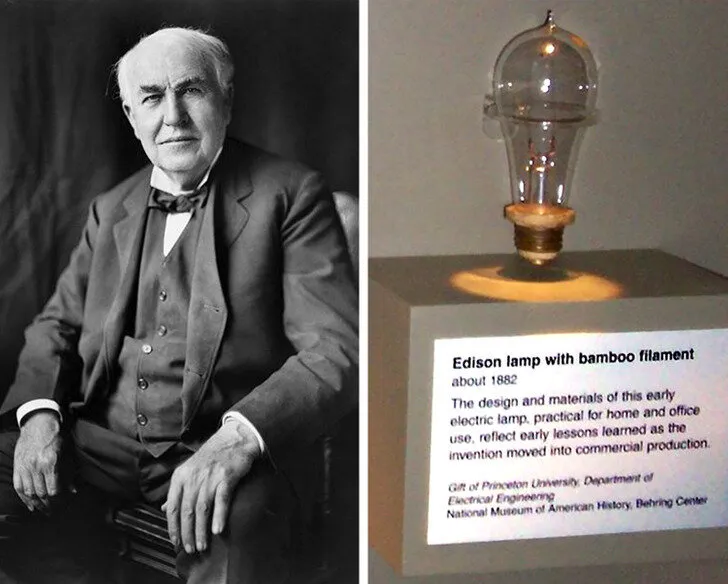 Photo from: adme.media
Photo from: adme.mediaSoviet Electrification: Light in Every Hut
The GOELRO plan, adopted in 1920, set an ambitious goal: to electrify the entire country within 15 years. 'Communism is Soviet power plus electrification of the whole country,' Lenin proclaimed.
By 1935, dozens of power plants had been built in the USSR. Electricity reached not only cities but also villages. The 'Ilich bulb' became a symbol of new life — that simple glass sphere changed the lives of millions.
In villages, electrification happened gradually. First, electricity was provided to clubs and collective farm councils. Then homes of leading producers were electrified. Only by the 1960s did electricity become available to every family.
The arrival of electricity radically changed rural life. Now people could work during dark winter months, read in the evenings, and listen to the radio. Children could do homework under bright light. Women were freed from sooty kerosene lamps.
In cities, electrification was faster. By 1940, most urban apartments were electrified. Of course, bulbs were often low-powered — 25–40 watts was considered normal. But even such light seemed like a miracle to people who remembered kerosene lamps.
The Fluorescent Era: Cold Light of Offices
In 1938, the fluorescent lamp was invented. It produced several times more light with the same energy consumption. This was a new revolution in lighting.
Fluorescent lamps quickly conquered offices, hospitals, and schools. Their cold white light was perfect for workspaces. By the 1960s, 'daylight' from fluorescent lamps became a symbol of modernity.
In the USSR, fluorescent lamps began mass production in the 1950s. They lit factory halls, universities, and stores. At home, they were poorly accepted — too institutional in appearance and slow to turn on.
Different types of fluorescent lamps emerged: straight tubes, ring-shaped, compact. Each type suited specific tasks. Long tubes for offices, rings for table lamps, and compact ones for homes.
But fluorescent lamps had drawbacks: they flickered at 100 Hz, tiring the eyes. They contained mercury, making them dangerous if broken. And they turned on slowly — especially in cold weather.
The Elegant Halogen: Bright Light of the 80s
In the 1980s, halogen lamps became trendy. They gave very bright white light and were compact. Halogens were perfect for spot lighting — shop windows, artwork, work desks.
In homes, halogen lamps were used to create a modern interior. Recessed ceiling spots, elegant table lamps, and furniture backlighting — halogens opened new possibilities in lighting design.
But halogen lamps heated up significantly and consumed a lot of energy. They were also sensitive to voltage fluctuations and often burned out. Replacing a halogen bulb became a ritual — you couldn't touch the glass with bare hands.
In theaters and studios, halogens became the main tool of lighting technicians. They provided a focused beam, were easily adjustable, and created the right atmosphere. Many professionals still prefer halogen lamps to modern LEDs.
LED Revolution: Light of the Future
In 2014, Nobel Prize winners in physics were awarded for the invention of the blue LED. It was this blue LED that made white light possible and opened the era of LED lighting.
LEDs surpass all previous light sources in every aspect: they consume 10 times less energy, last 25 times longer, don't heat up, and turn on instantly. Moreover, LED bulbs can be made in any color or brightness.
Smart LEDs controlled via smartphone allow creating lighting scenarios. Morning — bright cold light, evening — warm and relaxing. You can set automatic on/off, synchronize with music, or simulate sunrise.
In cities, LED lighting helps save electricity. Replacing regular street lamps with LEDs reduces consumption by orders of magnitude. Plus, LEDs don't attract insects — important for ecology.
In homes, LEDs open new possibilities: backlighting stairs, furniture, mirrors. RGB LED strips transform a regular room into a spaceship. And filament LEDs look like vintage Edison bulbs but consume 10 times less energy.
How Lighting Changed the World
The victory over darkness was one of civilization's greatest achievements. Artificial lighting changed not only daily life but the very essence of human existence.
- Before electricity, people lived by solar time. Work began at dawn and ended at dusk. In winter, they worked less; in summer — more. Electric light made the workday constant, independent of seasons.
- Nightlife in cities became possible only with lighting. Theaters, restaurants, clubs — the entire entertainment industry is built on artificial light. Night shifts at factories, 24-hour stores, hospital duty — modern civilization never sleeps.
- Education also changed. Now one can study and work at any time of day. Homework, reading books, preparing for exams — all became possible thanks to bright electric light.
- Even our perception of time changed. Night used to be a time for rest and sleep. Now many people are most active in the evening and night. 'Owls' and 'larks' — both are consequences of lighting.
The Dark Side of Light
But the victory over darkness has a downside.
- Light pollution has become a serious problem in big cities. Bright street and building lighting obscures stars — city dwellers see only the brightest celestial objects.
- Constant lighting disrupts human biological rhythms. Melatonin — the sleep hormone — is produced only in darkness. Bright evening light makes it hard to fall asleep, and lack of sleep leads to health issues.
- Ecologists warn: artificial lighting disorients migrating birds, disrupts animal breeding cycles, and affects plants. Many insect species fly toward light and die at street lamps.
- Energy consumption for lighting accounts for about 15% of global electricity generation. That's huge resource use and CO2 emissions. Switching to LEDs helps, but the problem remains serious.
From torches to LEDs — a journey spanning thousands of years. But the most significant changes happened in the last 150 years. Electric lighting changed the world more than many other inventions.
Today we take light for granted. We flick the switch, not thinking about how long humanity traveled from campfire to LED bulb. But sometimes turning off the light and sitting in darkness helps us feel how our ancestors lived, and appreciate this miracle we call simply 'lighting'.
More articles:
 Invisible Cabinet: Can You Find It? 5 Cool Ideas
Invisible Cabinet: Can You Find It? 5 Cool Ideas Breakfast at Tiffany's: What the Cult Film Concealed Behind the Scenes
Breakfast at Tiffany's: What the Cult Film Concealed Behind the Scenes Before and After: From a Dull Hallway in a Panel House to a Stylish Functional Interior
Before and After: From a Dull Hallway in a Panel House to a Stylish Functional Interior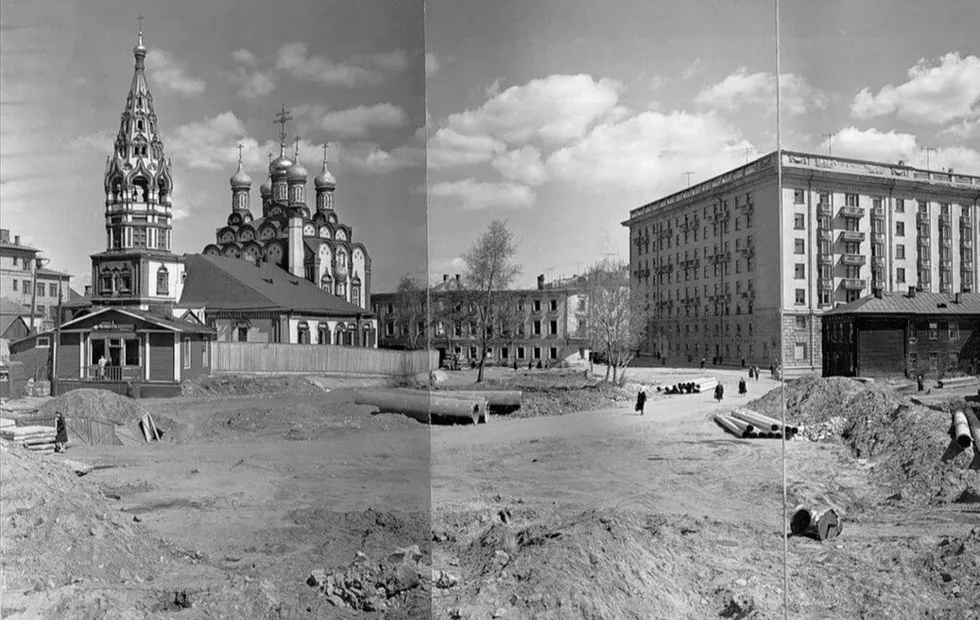 Hamovniki: How a Noble District Became the Most Expensive Area in the Capital
Hamovniki: How a Noble District Became the Most Expensive Area in the Capital 9 Cool Functional Solutions for Small Apartments
9 Cool Functional Solutions for Small Apartments Before and After: How They Updated the Dull Bathroom in a 2-Room Khrushchyovka
Before and After: How They Updated the Dull Bathroom in a 2-Room Khrushchyovka How We Designed the Kitchen Where Nature Became the Center of the Interior
How We Designed the Kitchen Where Nature Became the Center of the Interior 7 Ideas We Borrowed from an Incredible Mountain View Apartment
7 Ideas We Borrowed from an Incredible Mountain View Apartment